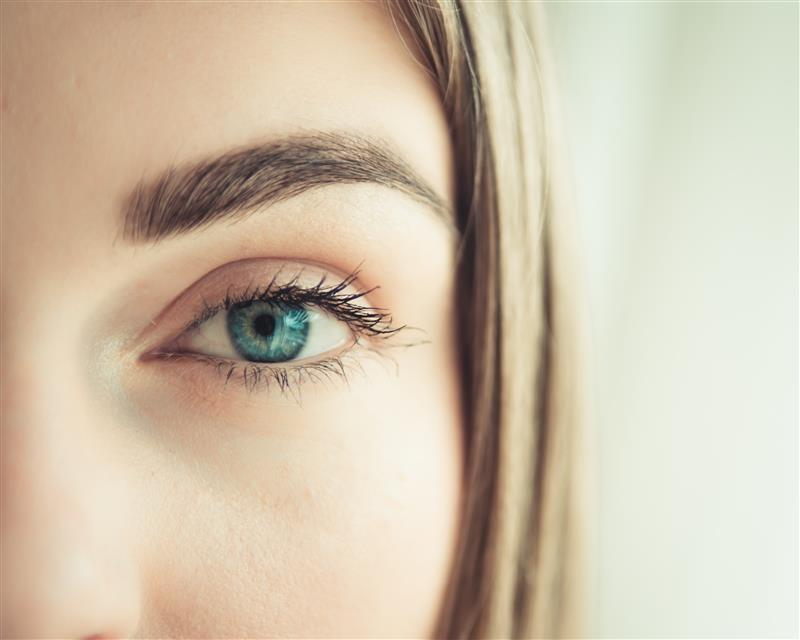
Remember when you were a young child and made fun of your grandmother's glasses? You questioned her as to why they contained such an odd line. Now that you're older and your vision is worse than it was when you were younger, it's not as hilarious. It's time to cross the line and think about multifocal or bifocal contacts if you're still using conventional bifocals. However, you must first have a deeper understanding of corrective eyewear than you had as a child. If you're wondering how multifocal contact lenses function, continue reading.
What are contacts with multifocals?
Presbyopia, a common age-related disorder that makes it harder to focus on up-close things, is why multifocal contact lenses were created. The most visible symptom of presbyopia is holding reading material farther from your eyes in order to focus well, which often begins by the ages of 35 to 40. Presbyopic individuals once had to wear reading glasses, which can be inconvenient as they are only effective for close-up vision. When they started having issues with their near vision, others who were already using far-vision glasses had to switch to bifocals. Even though progressive glasses correct near, intermediate, and far vision without the unattractive lines you formerly made fun of, some distortion still happens. Multifocal contacts are therefore a popular choice for many people. You may correct astigmatism while using these contacts to help you see up close and from a distance.
Different Bifocal and Multifocal Contact Lens Types
Bifocals are categorised as multifocal since they have two prescriptions; however, not all multifocal contacts are bifocals. Some multifocal lenses, like progressive eyeglasses, contain a variety of powers in each lens. Simultaneous vision lenses offer simultaneous correction for near, distant, and frequently intermediate vision. With alternating or split lenses, a person can alternate between two powers as the pupil rises and falls. The following materials are available for contact lenses, which influences the manufacturing procedure and possibilities to some extent.
-
Traditional soft contact lenses:
These are intended for sporadic use. They are cosy, and the eyes get used to them rather quickly.
-
Soft lenses made of silicone hydrogel:
Compared to conventional soft lenses, these lenses allow more oxygen to enter the eye. Just two of the well-liked choices for anyone looking for multifocals that provide all-day breathing comfort and natural moisture are Air Optix Aqua and Biofinity Multifocal.
-
Rigid gas permeable (RGP) lenses:
Although this material enables oxygen to reach the eyes and helps maintain their health, your eyes may require more time to acclimatise.
These lenses are designed to be discarded and changed with fresh ones each day, making them incredibly practical and economical. If you're looking for multifocal daily lenses, you have a lot of choices.
These lenses boost comfort and make it simpler for your eyes to adjust because they have an RGP area in the middle and softer material on the outer.
Design of Multifocal Lenses
Aspheric:
Prescriptions for both distance and close range are placed on or near the pupil in the centre of the field of vision. When you stare at far items while looking at close objects, and vice versa, your eyes become accustomed to this setup. Many of the soft disposable lenses on the market now use aspheric lens designs in various forms.
Concentric:
Also known as annular lenses, these lenses have a bulls-eye arrangement for the near and far prescriptions. The distance correction may be in the outside ring with the near prescription in the middle, or vice versa. Near vision in the centre works best for people with large pupils, whereas distant vision in the centre works best for people with small pupils. Both soft and RGP lens materials are used to make them.
Translation:
Prescription zones are distinct at close, far, and occasionally intermediate distances. Depending on what you're looking at, the pupil switches between them. Similar to bifocal eyeglasses, the near prescription is normally put at the bottom of the lens and the distant prescription at the top. For those who require the near prescription at the top rather than the bottom, this can be reversed. RGP lens materials are used to make translating lenses more frequently than soft lens materials.
Segmented bifocals:
These contacts, which are made of RGP lens materials, have two power segments with a clear division between the close correction on the bottom and the distance correction at the top. Like your grandmother's glasses, depending on what you're focusing on, your eye sees through one or the other, but the line is hardly noticeable because these contacts have an even smaller diameter than soft contacts. Custom trifocal GP segmented lenses are available with a narrow, ribbon-shaped segment for intermediate vision, much like trifocal spectacles.
The good news is that, at least with regard to your glasses, you no longer have to worry about your grandchildren making fun of you because of advancements in optical research! It's simple to step over the line thanks to a variety of high-tech, reasonably priced multifocal contact lens alternatives!